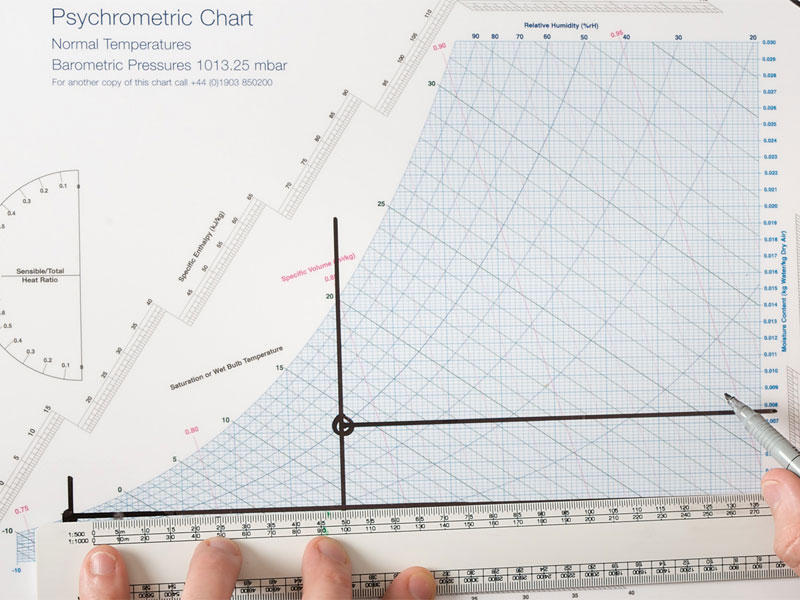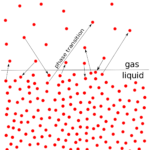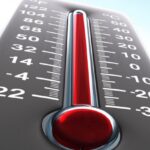All psychrometric properties of air are determined by measuring two psychrometric variables: for example, if wet- and dry-bulb temperatures are measured, then relative humidity, vapor pressure and dew point. Many variables can be measured to determine the psychrometric state of air, but dry-bulb temperature, wet-bulb temperature, dew point temperature, and relative humidity are most commonly measured.
Measuring Dry Bulb Temperature
Dry-bulb temperature can be simply measured by a mercury-in-glass thermometer, which is freely exposed to the air but is shielded from moisture and radiation heat sources. A thermometer can be made from any substance whose property changes predictably with temperature for instance the volume of mercury increases with increasing temperature. Beside mercury-in-glass, other liquids can also be used in this way. Other forms of volume-based thermometers use the differential expansion of metals in the form of a wound spring.
More recently, materials have been found whose electrical resistance change with temperature. These are usually manufactured from the oxides of transition metals such as manganese, cobalt, copper or nickel. They are called thermistors and are usually found in data-loggers and as computer-based sensors. When the temperature increases, the resistance of the thermistor decreases. Conversely, if the temperature decreases, the thermistor’s resistance increases.
In a weather station, the temperature and relative humidity equipment is usually housed in a white box shelter called Stevenson Screen. It shields the instruments from sunshine and precipitations and has louvered sides to permit the free movement of air. Ideally the shelter is placed over grass, mounted at 1 meter above the ground and as far from any buildings as circumstances permit.


